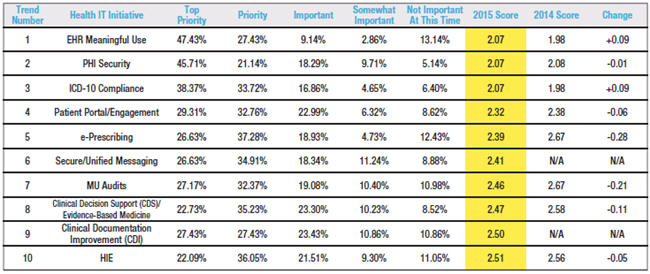Where VARs, MSPs Should Focus For Success In Healthcare
By The Business Solutions Network
Healthcare survey data points solutions providers to where the most realistic sales opportunities exist.
Few markets hold as much potential for solutions providers as the healthcare space. The market is huge, and requirements concerning improving patient outcomes have created all sorts of opportunities. The problems, as you might be aware, are that finding the opportunities, figuring out how your skill set can be leveraged, and getting to the right decision maker make this market particularly challenging. Despite the hurdles, the payoff can be more than worth it.
Find Your Healthcare Niche
Unless you’re already doing work for a large healthcare system, there’s little chance you’ll be able to make much headway in that segment of healthcare. The fact is, large healthcare systems have an existing IT staff and have most likely made significant progress on their IT upgrades and migrations. For this reason you’re probably better off focusing on small regional hospitals and physicians practices that, for the most part, don’t have an IT staff and are feeling pressure to understand and navigate what can be a confusing healthcare IT landscape.
Also, before you go hiring a healthcare expert, working on software integrations, or trying to dedicate time to learn the market, you might want to take a close look at what you can already do to address the specific needs of the healthcare market.
The healthcare market, in an attempt to solve some problems, has also created some pain for itself. “Workflow and habit changes inflicted on the front-line clinicians, physicians, and nurses have created pain that VARs can remove,” said Ken Congdon, Health IT Outcomes (HITO) editor in chief, in last year’s report. This fact still stands today. “Focus on making technology adoption easy — particularly on clinicians. If you can help an internal IT or administrative department improve the lives and workflow of its most valuable assets [its physicians], you can be an invaluable resource for them.”
Uncover Healthcare IT Projects
Congdon’s magazine runs a “Top 10 Health IT Trends” survey every year. This survey reveals the IT priorities of healthcare providers. For the 2015 trends survey 53.6 percent of respondents were hospitals and IDNs (integrated delivery networks), 19.2 percent were group practices/clinics/ambulatory care centers, followed by 11.7 percent consultants, systems integrators, and VARs.
Table 1: The Top 10 Health IT Trends For 2015

Using the data from this survey, we can determine where the best opportunities exist for solutions providers. You can see the top 10 trends/opportunities in the table on the previous page. For a list of the top 40, visit www.HealthITOutcomes.com.
Congdon reveals that this year there was a three-way tie for top health IT trend for 2015 among EHR MU (electronic health records meaningful use), PHI (protected health information) Security, and ICD-10 Compliance. By diving deeper into the data to determine the tiebreaker (percentage of survey respondents who ranked each of these initiatives as a “Top Priority”), final rankings were determined. “Nearly 50 percent of our survey respondents [47.43 percent] ranked EHR MU a ‘Top Priority’ for 2015, making it our top overall health IT trend for the fifth year in a row,” says Congdon. “This initiative was followed by PHI Security, which received ‘Top  Priority’ designation by 45.71 percent of respondents. Finally, ICD-10 Compliance ranked third with 38.37 percent of respondents naming this initiative a ‘Top Priority.’”
Priority’ designation by 45.71 percent of respondents. Finally, ICD-10 Compliance ranked third with 38.37 percent of respondents naming this initiative a ‘Top Priority.’”
All that said, Congdon believes that most VARs and MSPs aren’t going to be able to directly capitalize on EHR and ICD-10 demands by selling and installing the software for these systems. In fact, most EHR software packages are sold directly by the vendors. Where Congdon does see a need is in fulfilling hardware requirements that come along with large systemic upgrades, including, specifically, PCs, tablets, laptops, and mobile carts. Indeed, enabling care givers to have immediate access to patient information often requires significant purchases of computing devices.
With those devices, particularly mobile devices, comes a need to track and manage. Hospitals have lots of rooms and closets where small handheld computers can be misplaced. In fact, there’s a general issue of most medical equipment being stashed in the wrong room or misplaced. For these reasons, mobile device management is a great service MSPs could be offering. Additionally, bar coding and RFID to track medical equipment can be very appealing to some healthcare providers.
As the concept behind PHI security is limiting patient data being stored on local machines, there remains a good opportunity to sell desktop virtualization solutions. Related, Congdon sees a trend with healthcare providers moving to the cloud for storage and security reasons.
One of the biggest climbers in the 2015 survey results was IP networking. This isn’t surprising when you consider what we just co vered — hospitals are adding endpoints to their networks like crazy. It makes sense that physical and wireless networks would need attention, from the standpoint of infrastructure and security. This stands as a great opportunity for VARs.
Congdon points out one last opportunity that’s on the rise in healthcare — Telehealth/Telemedicine/Remote Patient Monitoring. This is a booming healthcare segment, and VARs with experience in videoconferencing equipment and software, and remote monitoring can do well here.
No matter which opportunity you target, one key rule should govern all your efforts. To be the most successful in healthcare, focus on the pain points of the caregivers. Create and offer solutions that will make their jobs easier. Doing so will ensure your success.
